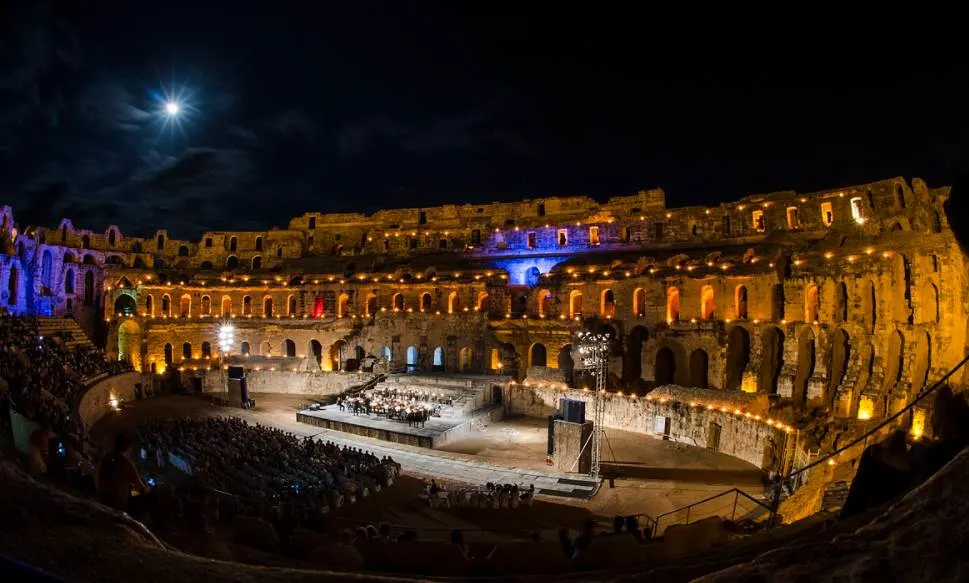The Roman Empire didn’t just cover all of Europe south of the Danube River, it also covered vast spaces in Asia and Africa at its peak. This is emphasized by the large number of ancient ruins that can be found here.
One of the most remarkable of these structures is an incredible Roman Amphitheater located in the city of El Jem (or El Djem) in modern-day Tunisia.
Let’s take a closer look at some of the most interesting facts about the Amphitheater of El Jem, an ancient Roman entertainment venue that has turned into a popular tourist attraction in North Africa.
1. It’s located in the northeastern part of Tunisia
The city of El Djem is a relatively small town in the northeastern part of Tunisia. What’s remarkable is that it only has a population of just over 21,000 today, much less than the actual capacity of the amphitheater which was estimated to have been 35,000.
This also means that the ancient Roman city of Thysdrus that was located here was much larger. It was the third-largest city in the Roman province of Africa after Carthage and Hadrumetum (modern-day Sousse).
The main reason was the fact that the climate was completely different back then and the city thrived from exporting olive oil. This resulted in a large population who wanted to be entertained, hence this magnificent arena was built.

2. The huge entertainment complex was built in the 3rd century A.D.
The date of completion of the oval-shaped theater is believed to have been around 238 A.D. It was built with large stone blocks that were placed on a perfectly flat surface.
With an estimated capacity of 35,000, it was also one of the biggest amphitheaters in the world at the time. To give some reference to this number, the Colosseum in Rome could hold an estimated number of over 50,000 spectators.
As you surely expected, the entertainment at this stadium wasn’t a tennis or football game, but often included gladiators fighting to the death.

Live executions were performed during lunch breaks and “Damnatio ad Bestias” was a particularly popular form of execution. This involved wild animals such as lions or elephants to rip apart or crush the condemned, scary stuff indeed!
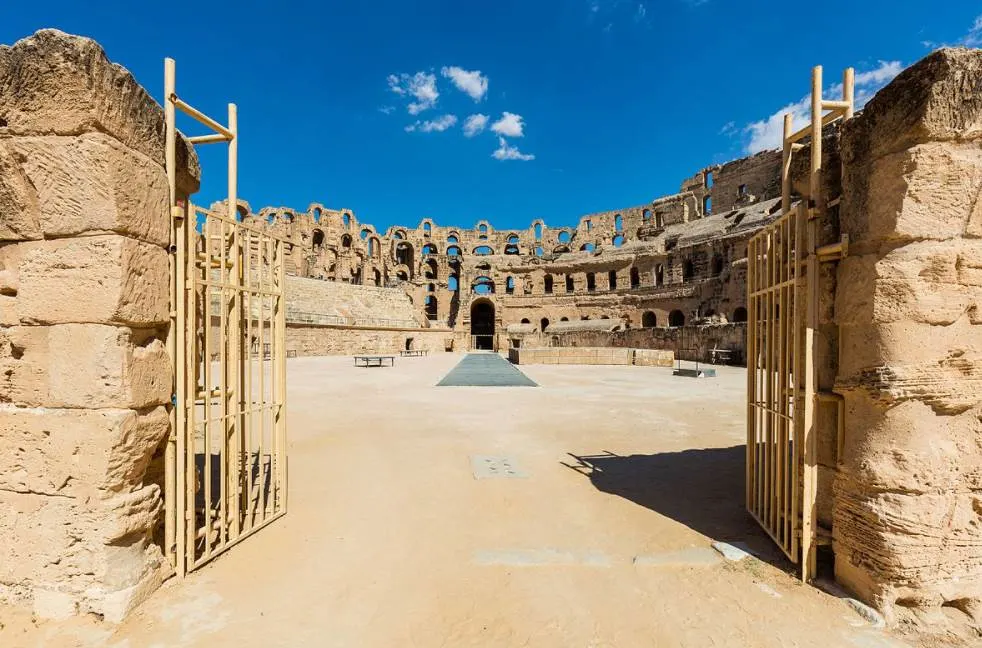
3. It’s assumed that it was commissioned by a young boy
The third century A.D. wasn’t exactly the most stable period of the Roman Empire. Emperors succeeded each other rapidly, especially following the assassination of Emperor Alexander Severus (208-235), the final emperor of the Severan Dynasty.
He was succeeded by several Emperors, hence the year 238 A.D. was referred to as the “Year of the 6 Emperors.”
The victor of this power struggle was a 13-year old boy named Gordian III. He ended up ruling the Roman Empire between 238 and 244 A.D. after serving a stint as proconsul.
This means that it’s assumed that this young boy commissioned the amphitheater while he was most probably not even a teenager yet!
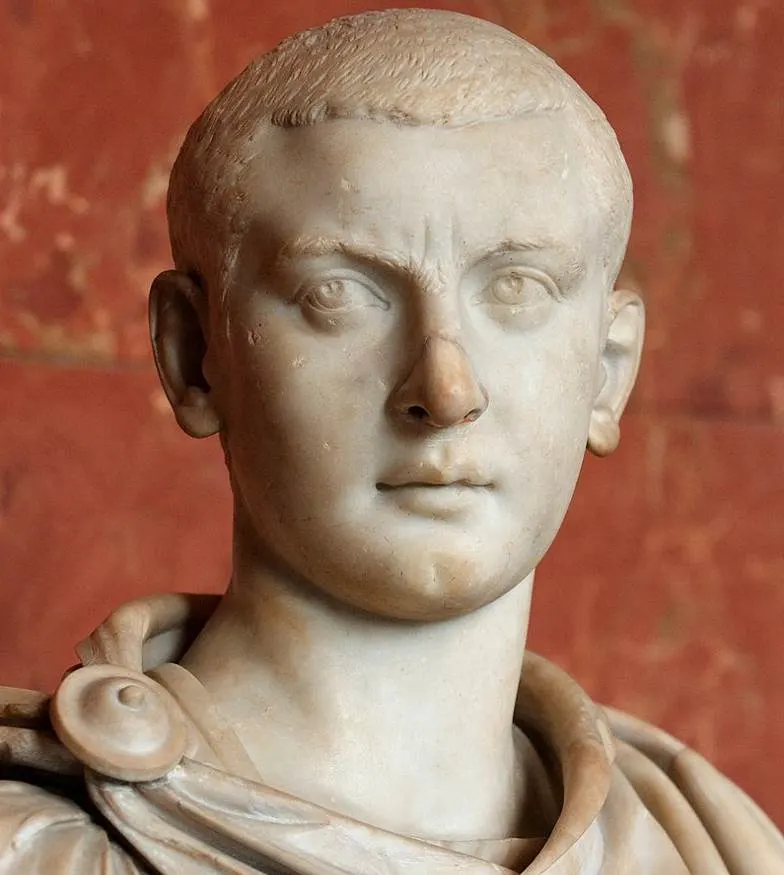
4. It was used for a wide variety of purposes after the Romans left Africa
The Romans were finally defeated by the Umayyad army from Egypt who sacked Carthage in 698. The Muslim Conquest of Africa also resulted in the Roman Amphitheater of El Jem being repurposed in a variety of ways.
Some of these included:
- A fortress during the Middle Ages.
- A location for revolutionaries to hide during the Revolutions of Tunis in 1695.
- A salt factory during the 18th and 19th centuries.
- A location to store grain and shopping mall.
That’s quite something else than blood games and cruel executions, don’t you think?
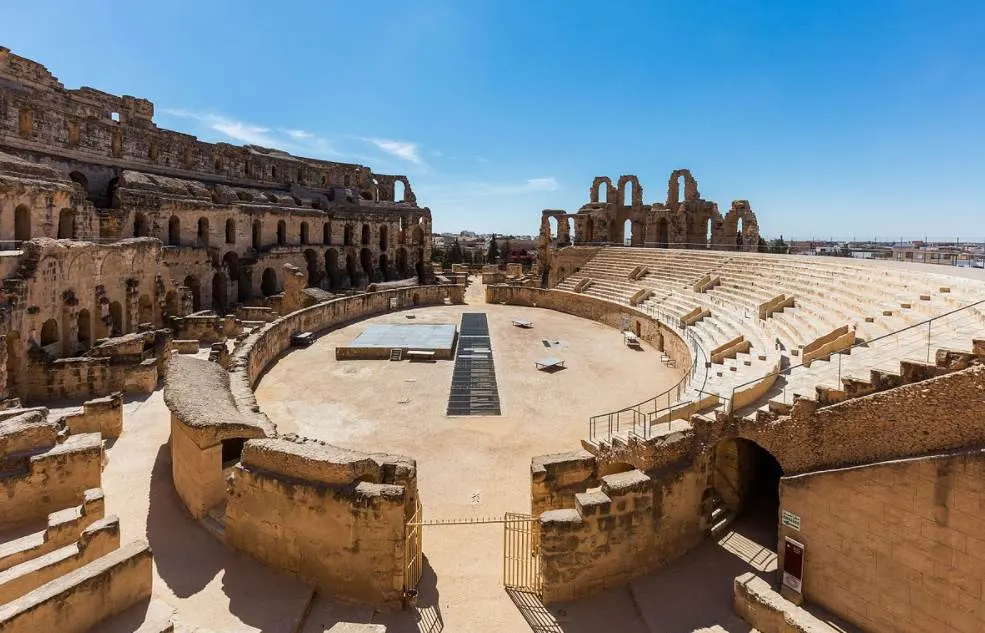
5. It has been a UNESCO World Heritage site since 1979
The remarkably preserved Roman amphitheater of El Jem is one of the most fascinating ancient Roman structures in North Africa. The architectural elements of the building, including the distinctive Roman arches, have not been altered since its completion.
It’s the largest of its kind in North Africa and has been recognized as an impressive ruin by UNESCO. This organization declared it to be a World Heritage site in 1979.
This also means that it’s one of the must-visit tourist attractions while you’re in Tunisia. It’s located along the A1 Motorway which runs from Tunis in the North to the city of Sfax in the southeastern part of the country.
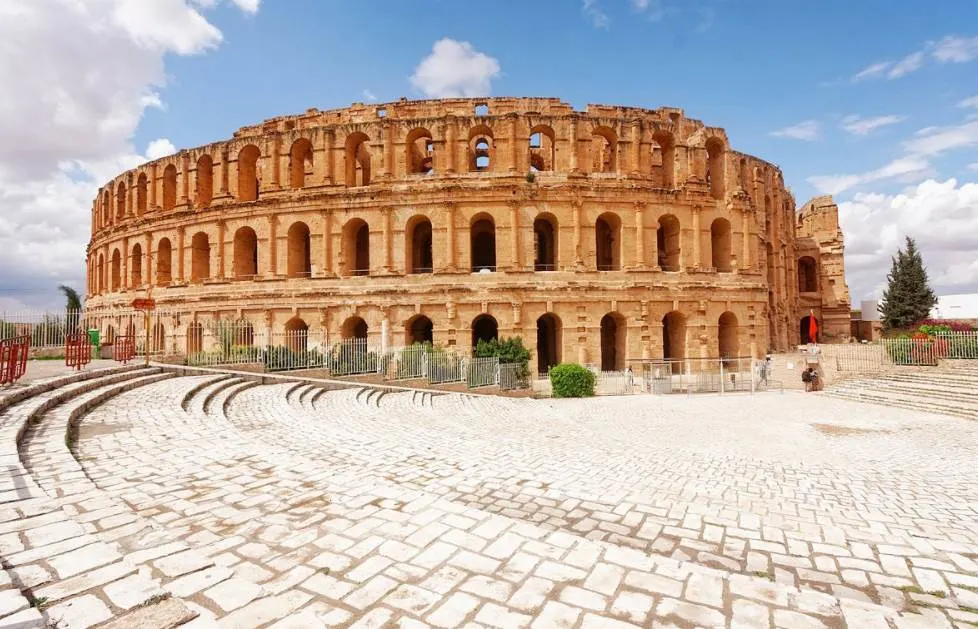
More interesting facts about the Amphitheater of El Jem
6. The arena is pretty much as big as any modern-day football stadium. The entire complex has a length of 148 meters (486 feet) and a width of 122 meters (400 feet).
The enormous oval-shaped entertainment venue covers a total area of 1.37 hectares (3.38 acres). These are staggering figures, especially because it was built so far from Rome, something that emphasized the extent of the Roman Empire.
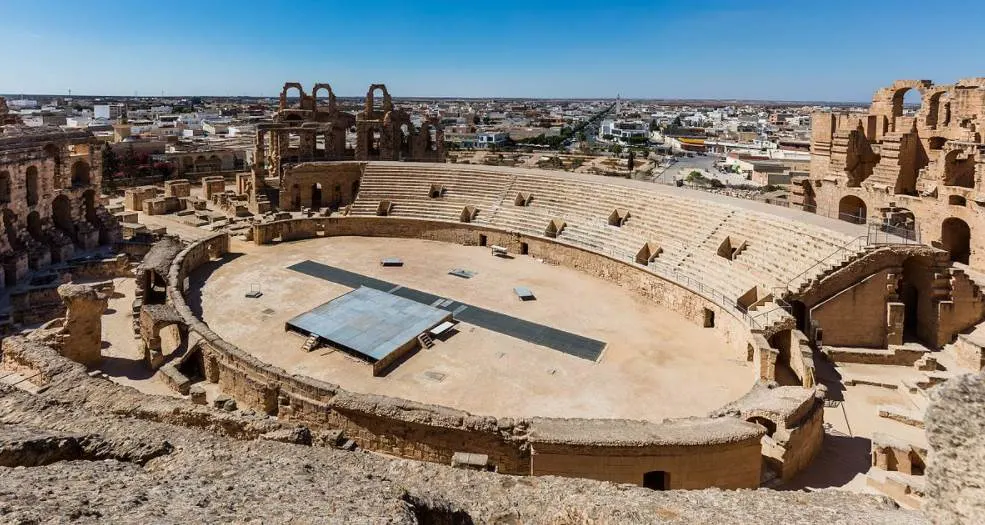
7. This wasn’t the first amphitheater built in El Jem but the third one. Some of the ruins of the two older amphitheaters can still be seen in this relatively small town as well.
8. Just like most other amphitheaters built for entertainment purposes, this one featured a network of underground tunnels referred to as the “Hypogeum.”
This allowed for shows in which either gladiators or wild animals were pulled up to the arena floor. These surprising elements clearly added to the entertainment value, that’s for sure.
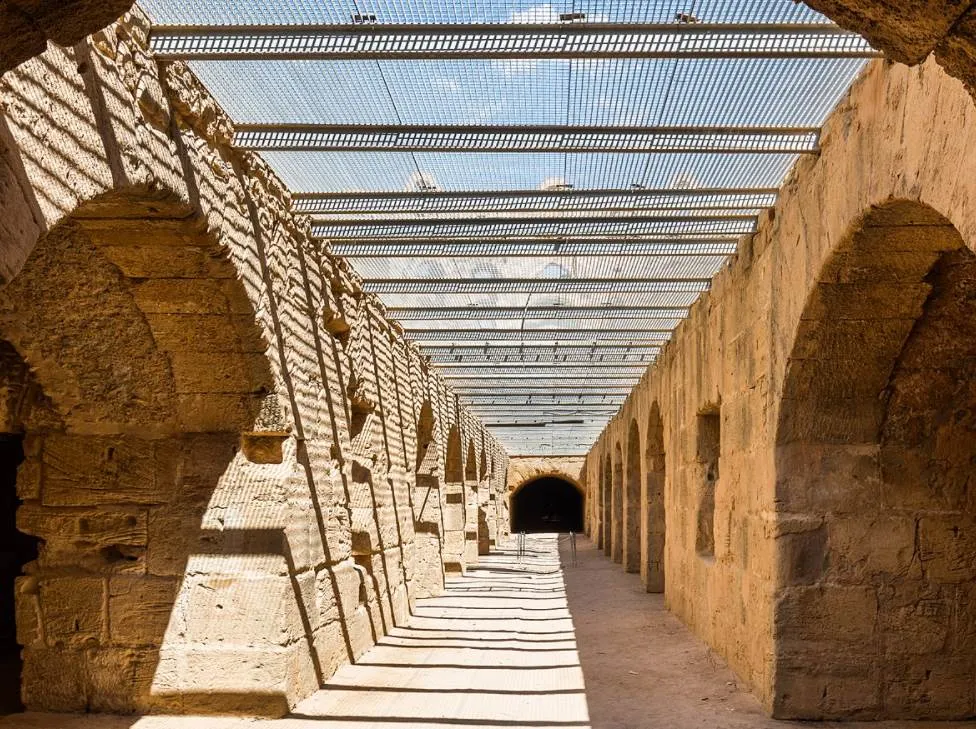
9. The amphitheater has been featured in a wide variety of media. This included Monty Python’s epic “Life of Brian” (1979) and television programs such as “Long Way Down” and “The Amazing Race.”
Perhaps the most memorable video shot here was a commercial from “Nike” in 1996 which featured a wide variety of famous football players, including Ronaldo, Paolo Maldini, Luís Figo, Patrick Kluivert, and Jorge Campos, who played a gladiator-style game called “Good vs Evil.”
If this doesn’t ring a bell yet, the game ended with Eric Cantona saying “Au Revoir” and shooting the ball through the evil goalkeeper.
10. The amphitheater is still used for entertainment today If you’re lucky enough to visit the complex at the right time you might want to grab the chance to enjoy a nice concert here.
You’ll hardly find a better place to enjoy music than inside the ruins of a stadium that was built about 18 millennia ago, right?
